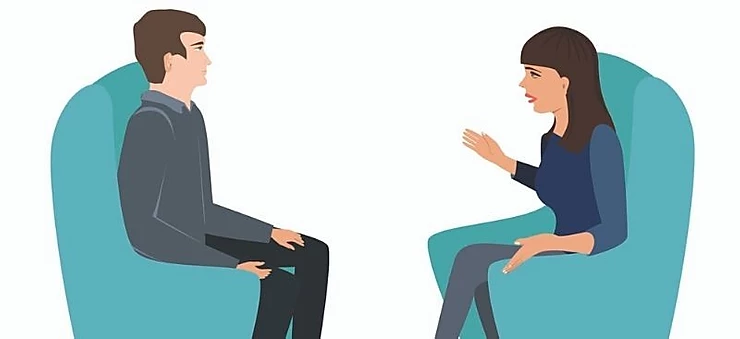Unused Embryos Pose Difficult Issue: What to Do With Them
After years of infertility, Angel and Jeff Watts found a young egg donor to help them have a baby. They fertilized her eggs with Mr. Watts’s sperm and got 10 good embryos. Four of those embryos were transferred to Ms. Watts’s womb, resulting in two sets of twins — Alexander and Shelby, now 4 years old, and Angelina and Charles, not yet 2.
But that left six frozen embryos, and Ms. Watts, 45, had no plans for more children. So in December she took to Facebook to try to find a nearby Tennessee family that wanted them.
“We have 6 good quality frozen six-day-old embryos to donate to an amazing family who wants a large family,” she posted. “We prefer someone who has been married several years in a steady loving relationship and strong Christian background, and who does not already have kids, but wants a boat load.”
In storage facilities across the nation, hundreds of thousands of frozen embryos — perhaps a million — are preserved in silver tanks of liquid nitrogen. Some are in storage for cancer patients trying to preserve their chance to have a family after chemotherapy destroys their fertility. But most are leftovers from the booming assisted reproduction industry, belonging to couples like the Wattses, who could not conceive naturally.
Donated Embryo Transfers on the Rise
After remaining fairly stable through the 2000s, the number of donated embryo transfers nearly doubled from 2009 to 2013.
And increasingly families, clinics and the courts are facing difficult choices on what to do with them — decisions that involve profound questions about the beginning of life, the definition of family and the technological advances that have opened new reproductive possibilities.
Since the first American “test tube” baby was born in 1981, in vitro fertilization, at a cost of $12,000 or more per cycle, has grown to account for more than 1.5 percent of all United States births.
The embryos with the greatest chance of developing into a healthy baby are used first, and the excess are frozen; a 2002 survey found about 400,000 frozen embryos, and another in 2011 estimated 612,000. Now, many reproductive endocrinologists say, the total may be about a million.
Couples are generally glad to have the leftover embryos, backups in case apregnancy does not result from the first tries.
“But if I ask what they’ll do with them, they often have a Scarlett O’Hara response: I’ll think about that tomorrow,” said Dr. Mark V. Sauer, of Columbia University’s Center for Women’s Reproductive Care. “Couples don’t always agree about the moral and legal status of the embryo, where life begins, and how religion enters into it, and a lot of them end up kicking the can down the road.’’
There are no national statistics on what happens with these leftover embryos. As a practical matter, many sit in storage indefinitely, academic researchers say, either at fertility clinics or other facilities, costing $300 to $1,200 a year. A small percentage of people stop paying the storage fees and leave it to the clinic or facility to figure out what to do.
But most people grapple among these choices: using them to have more babies; thawing and disposing of them; donating them for research; or, like the Wattses, giving them to another family.
For many, the decision is wrenching, researchers say.
“People might start out thinking they would donate them to research, or give their extras to someone else with need,” Dr. Sauer said. “But once they have a baby, they change their minds, thinking it would be too weird to have another child out there, just like their son or daughter.”
Many couples see their embryos as virtual children, fertility doctors say, and the numbers willing to give them to another family are increasing. According to the American Society for Reproductive Medicine, donated embryos were used in 1,084 transfers in 2013, up from 596 in 2009. They are meeting a demand.
“It’s becoming more common, people reaching out to fertility clinics to see if they have embryos available for donation, or looking for referrals online.” said Elizabeth Falker, a New York lawyer. “I love it, since it provides a family to someone who’s run out of money to proceed any other way, and it uses embryos that would otherwise sit in cryopreservation indefinitely.”
To meet the demand, a fertility clinic in California has even created a controversial practice of creating batches of embryos from donor eggs and sperm, to share among several families.
Some people, saying they were troubled to be destroying a potential child, have created their own disposal ceremony — or, in a procedure known as compassionate transfer, have had a doctor place the embryos in the womb of the woman who made them, at a time of the month when she will not become pregnant. A few families have transferred ownership of the embryos to their adult children.
Sometimes couples disagree about who has the right to use their embryos. The actress Sofia Vergara and her ex-fiancé Nick Loeb have been fighting over the frozen embryos they created, providing weeks of media fodder, including Mr. Loeb’s Op-Ed article in The New York Times. Some cases have landed in court, where there is little guidance or precedent for judges struggling with this new territory, and so far, little consistency in their rulings.
In Illinois, the courts have said it should be a matter of contract. But judges in Massachusetts have said such contracts are not enforceable by the courts. Other courts have called for balancing the interests, and considering whether one party has no other option for having a baby, while others still have required mutual consent by the man and the woman when the embryos are to be used.
Most courts have sided with the party who does not want the embryos used. When an embryo exists outside a woman’s body, it seems, men and women have the same right not to procreate.
Then there is the religious dimension. Medical groups celebrate the advances in reproductive technology that have allowed so many people to become parents. But in vitro fertilization and embryo-freezing are frowned on by the Roman Catholic Church, which teaches that life begins at conception.
Most evangelicals accept in vitro, but believe frozen embryos the right to full lives.
The government is of little help with all these challenges. While some countries have strict rules about assisted reproduction, limiting how long embryos may be frozen or how many may be transferred at once, the field remains largely unregulated in the United States
“We don’t know in the U.S. whether embryos are going to be treated as property or not, as children or not, or sui generis, as something different,” said Alta Charo, a bioethicist at the University of Wisconsin-Madison. “That keeps alive a debate around their moral status, their legal status, debates that quickly spiral into the black hole that is the abortion debate.”
A Matter for the Courts
When Karla Dunston, an emergency room doctor, found out she had cancer in 2010, she asked Jacob Szafranski, the man she was dating, to contribute sperm so she could freeze some embryos for later use. He agreed, and they created three embryos before she started her cancer treatment.
They consulted a lawyer the day they visited the fertility clinic but never signed a written contract. Soon after, he ended the relationship. When Dr. Dunston finished treatment and wanted to become pregnant, he would not let her use the embryos.
After four years of litigation, an appeals court ruled last Friday that Dr. Dunston could use the embryos, based on the oral agreement the two made when the embryos were created. Mr. Szafranski is appealing.
The case highlights some of the complications of dealing with the growing ranks of frozen embryos.
Lawyers for both sides said their clients would not grant interviews, but court documents lay out their views. Dr. Dunston said she relied on Mr. Szafranski’s willingness to father a child; if she had thought he might change his mind, she could have used an anonymous sperm donor. She said that she would not seek child support, and that Mr. Szafranski could choose whether to be involved in his offspring’s life.
Mr. Szafranski argued that just as he would not have the right to force her to use the embryos, she should not be able to force him into fatherhood.
“It’s hard to fit this into any analytical framework,” said Brian A. Schroeder, Mr. Szafranski’s lawyer. “It’s emotionally charged, there are different circumstances in each of these cases, and it’s not her egg and his sperm anymore, it’s an embryo. Thirty years ago, before IVF, this could never have happened. But now that it exists, what do we do about it?”
This is not just a legal question. Religious and social views often come into play.
For example, the National Embryo Donation Center in Tennessee, which is endorsed by the Christian Medical Association, places embryos only with heterosexual couples married at least three years — and only after a home study exploring their readiness to be parents, as is required for families adopting a living child.
“We think the embryos deserve the same level of protections as children who are being adopted,” said Stephanie Wood-Moyers, marketing director of the center, where the Watts embryos were stored.
But the American Society for Reproductive Medicine, along with most doctors and abortion rights supporters, prefers the term “ embryo donation.”
“We and the society really strongly advocate that the term should be embryo donation, because adoption is a term for a live child,” said Dr. Craig Sweet, medical director of Embryo Donation International, in Florida, which works with singles and gay and straight couples, and requires no home study. “We’re not here to save embryos; we’re here to build families.”
NYTimes.


















